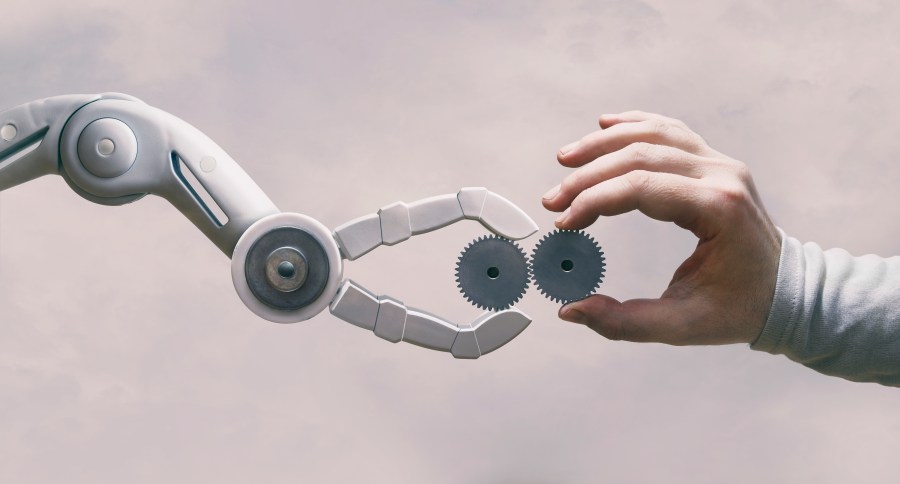AI on the Job: How generative tools automate and augment some parts of work

You might have heard some of the talk about how new generative artificial intelligence tools, like chatbots and image generators, could upend work.
Marketplace’s Meghan McCarty Carino is diving deeper into the disruptions this technology is already bringing to workplaces — not in some speculative future, but right now.
In our series this week, “AI on the Job,” we’ll explore the work that AI is automating, augmenting or creating entirely new markets for.

Kamales Lardi, CEO of Lardi & Partner, a consulting company in Switzerland, said AI is already widely used in many industries, automating complex tasks and accelerating decision-making.
As a consultant, Lardi sees an increasing number of large companies looking to generative AI to take over mundane administrative tasks. But this technology can do more than that.
“We are seeing generative AI systems really able to create good content and also generate original content, which is something fairly new,” Lardi added. Those systems could increase productivity by 1.5% over a decade, according to a Goldman Sachs report.
Gains like that would be great, Lardi said, but she worries about how companies will go about integrating the technology. For instance, by replacing entire departments like human resources.
“If you replace that with an AI-based system, the data and information that’s being used might not be as unbiased or might not be as diverse or might not be [good at] considering uncommon or commonsense elements that a human being might consider,” Lardi said.

But in many cases, the technology may augment human workers instead of replacing them, according to Yossi Sheffi, director of the Center for Transportation and Logistics at the Massachusetts Institute of Technology. He pointed to an earlier technology as an example: the wide deployment of robots in warehouses like those owned by Amazon.
“Instead of people running around the warehouses, the people stand and the robots run around the warehouses,” Sheffi said. “But they bring the work to the people who then put it in boxes, package them, whatever.”
In the same way, a large language model could improve customer service calls by suggesting responses to common questions that a human representative might want to offer depending on the conversational context.
But working with this new technology could require learning new skills, Sheffi added. Workers who don’t, or can’t, adjust could be left behind. “They’ll have to do low-level, simple jobs that also a machine can do,” he said. “And the reason they do it is because they’re cheaper than the machine.”
Still, neither he nor Lardi expects AI to cause mass unemployment. But Lardi said she’d like to see some regulation that protects employees from potential displacement.
The future of this podcast starts with you.
Every day, the “Marketplace Tech” team demystifies the digital economy with stories that explore more than just Big Tech. We’re committed to covering topics that matter to you and the world around us, diving deep into how technology intersects with climate change, inequity, and disinformation.
As part of a nonprofit newsroom, we’re counting on listeners like you to keep this public service paywall-free and available to all.
Support “Marketplace Tech” in any amount today and become a partner in our mission.


















